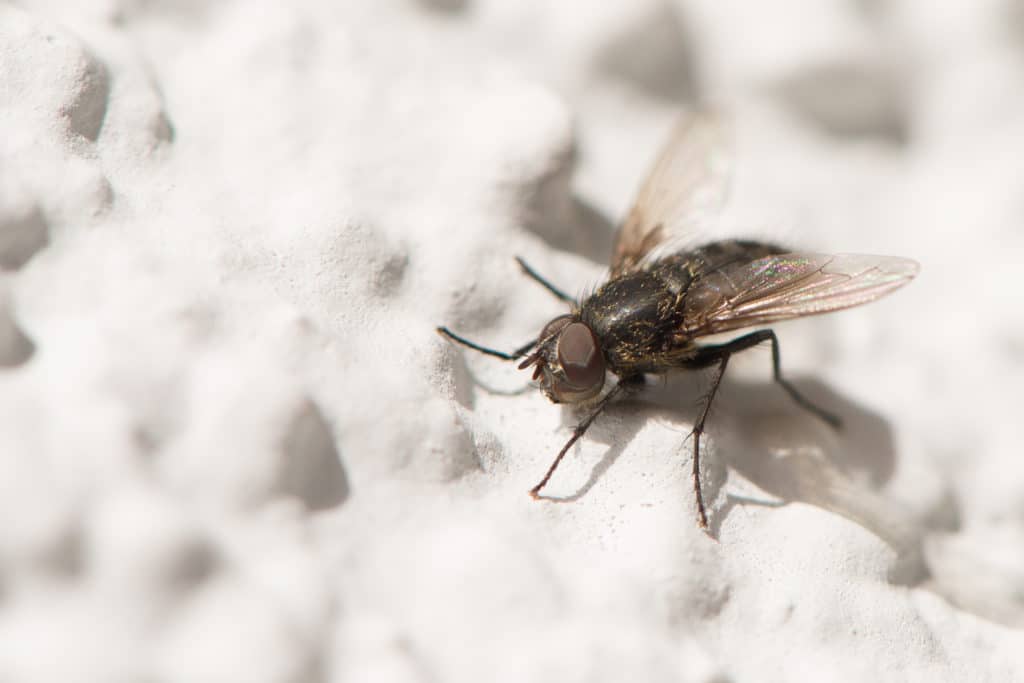
Risk to your Home or Business
Flies carry diseases and can also be really damaging to a home or business as it can be an indication of bad hygiene. It may also be linked to having a rodent infestation. At Mercury Pest Control we have visited many London homes on a pest control fly call out and then had to address a rat or mice infestation, so seeing the odd fly may be the indication of a more serious problem.
Fly Control For London Businesses
Mercury Pest Control provides expert commercial fly control for businesses. This includes:
- EFK installations and servicing
- Proofing and fly screens for doors and windows
- Residual insecticidal and ULV fogging treatments
- Staff training on pest awareness.

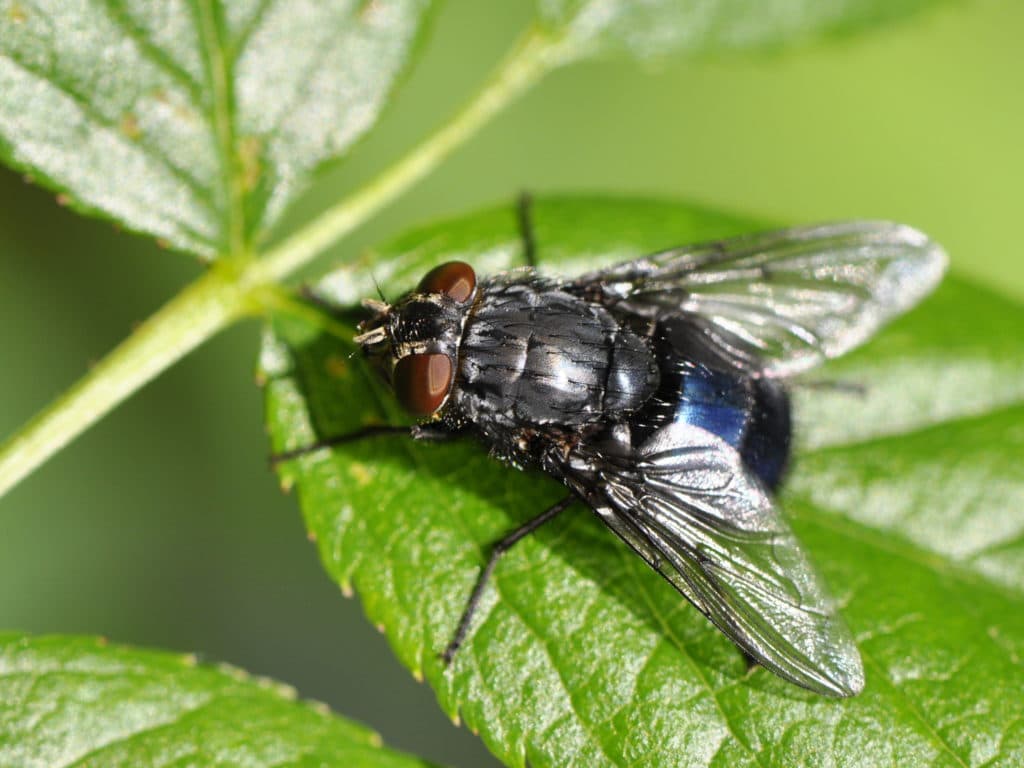
Blue bottle (Blow flies) (Calliphora spp)
Identification: There is a variety of the blue bottle species but both of the two most common are 16-13 mm long with a wingspan of 25mm, have bristly bodies and a metallic blue in colour.
Habitat: Commonly found in; abattoirs, commercial canteens, meat processing and any food processing factory where organic material is produced. They can be found in domestic homes with rodent infestations, restaurants, cafes, offices, refuse areas and retail food outlets.
Breeding: Blue bottles can lay up to 600 eggs after 4 days of mating. They’re whitish and will typically be in older meat, meat products and most commonly a decaying carcass which can indicate a potential rodent infestation. Eggs are laid in clusters and will hatch out 18-48 hours at around 18-20 degrees. They feed for 8-11 days and the larvae moult 3 times growing to 18mm. When fully grown larvae will scarper off to pupate sometimes up to 100 metres away from the food source. At 18-20 degrees the fly emerges 2 weeks later and adults will live for around 35 days.
Control: Deep cleaning of all areas involved disposing of rotten food or waste. If linked with unpleasant smells a Professional Pest Control inspection may be needed to check for evidence of a rodent infestation, (especially rats) as this can sometimes be overlooked. This can be followed up by light residual insecticidal and ULV fogging treatment and fly screens.
Fruit Flies: (Drosophila spp)
Identification: 2mm long, with a 3 to 4mm wingspan and fat body is greyish yellow, some have large often red or orange eyes, feathery antennae and cross striped abdomens.
Habitat: Very common outside and will come inside to breed. They can be found in food factories, restaurants, drink producers, breweries, food markets, bars and pubs.This is typically where beer and soft drinks have been spilt. They will also harbour in refuse areas where empty bottles or food waste is being stored in bins.
Breeding: 600-700 eggs laid at approx. 20-25 per day in food stuff for the hatching larvae, larvae – small legless maggots and will have 3 moults and then they migrate to pupate. Egg to adult stage can be short as 8 days at 30 degrees but will be most typically at around a month.
Control: Residual insecticide and UVL treatment may only bring limited effect. Control is truly benefited from deep cleaning potential breeding sites involved, jet washing bin areas, inspecting for leaks in drinks factories and beer taps. Bottles should be wiped down regularly and bar areas steam cleaned.
EFK units for front and back of house.
Cling film can be used to cover taps at night in bars and pubs and wiping down surfaces before closing.
Drain and gullies should be kept clean and all areas inspected regularly during onsite pest control.
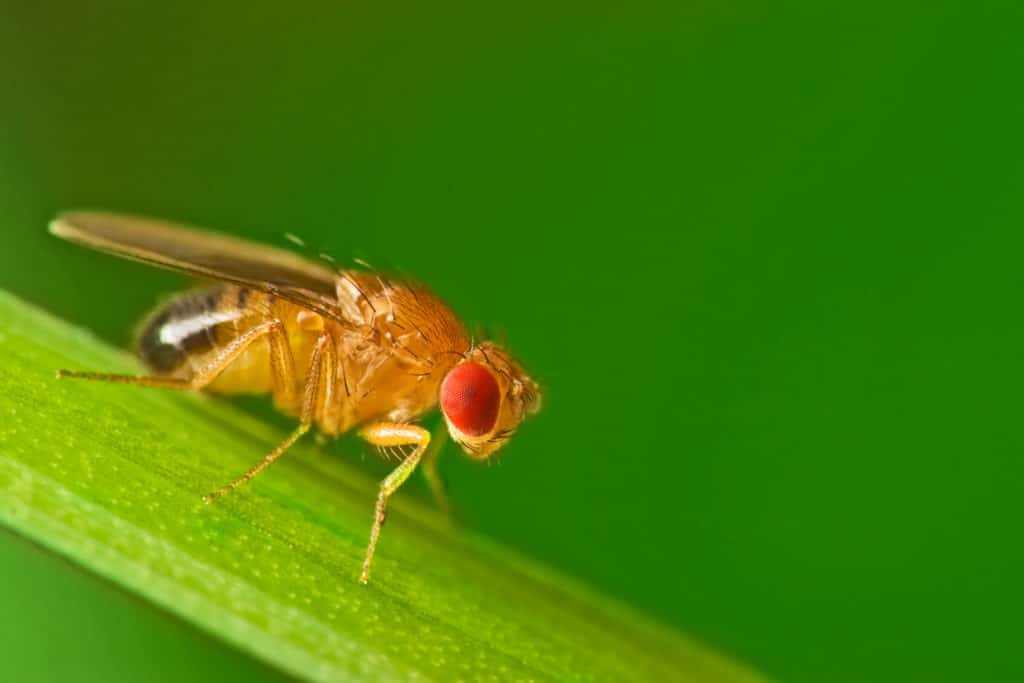
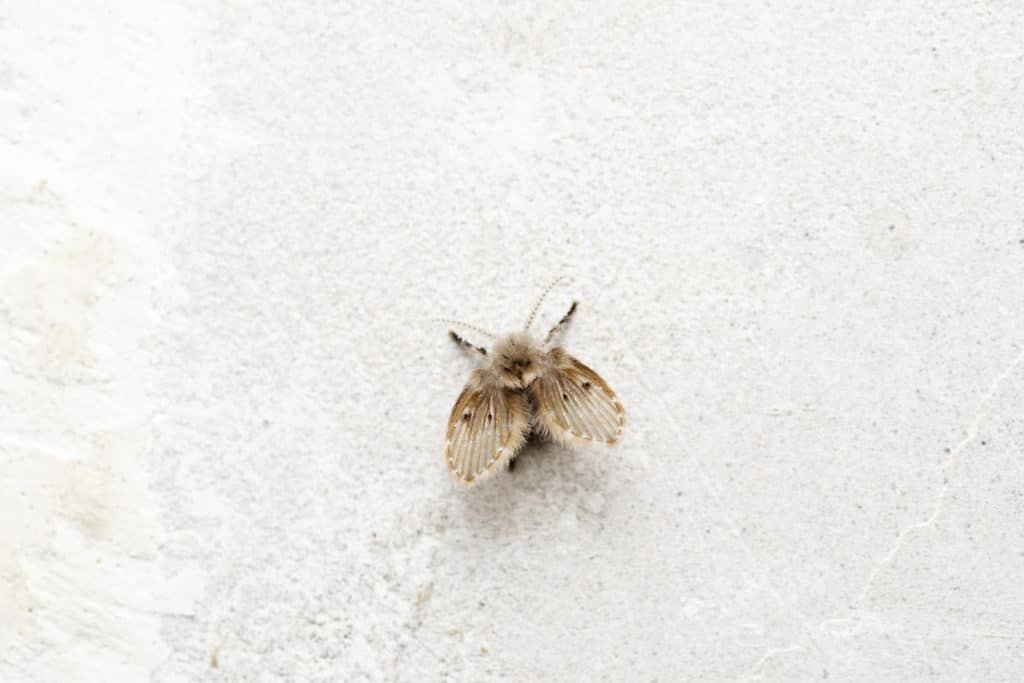
Drain Fly (Sewage Flies) (Psychoda spp,)
Identification: Very small in size and Adults 2mm in length and are typically grey with hairy almond shaped wings. Larvae grow up to 9mm.
Habitat: Very common in sewer networks, manholes and gullies. Can also be present in commercial buildings and domestic homes where blockages are present.
Breeding: 200 eggs are laid in batches typically on the surface of sewage percolating filter beds. Larvae live in this matter feeding until pupation. The eggs take 1-6 days to hatch, then the larvae develop from 10-50 days depending on temperature. There can be as many as 8 generations each year.
Control: ULV/Insecticidal treatment can be applied to reduce the population of adults but is not likely to work. Drainage control and deep cleaning of pipework is the solution for these flies. Unblocking of drains and jetting pipework to clear organic matter build up will usually aid in full control.
Cluster Fly: (Pollenia rudis)
Identification: 6mm long, wingspan is 10mm, a large blackish fly with fine golden hairs on thorax. Has large reddish compound eyes.
Habitat: WIll usually enter roof spaces and lofts in large numbers but all also fly through windows into rooms in autumn to hibernate. In spring the warmth revives them and they start to leave buildings in numbers. The green cluster fly is also sometimes encountered with the cluster fly.
Breeding: Eggs laid on damp soil, leaf litter and rotten vegetation. Hatch in around a week. Depending on the weather 2 generations are normal but up to 4 is possible, flies hatch from the pupae and live outdoors. They will usually start to infest buildings in larvae numbers in late September into November when the temperature drops.
Control: Proofing is the best control measure for these flies. Caulking around window frames and sealing off other potential entry points around roof spaces can contribute greatly in control. For example, fascia boards and soffit gaps can be sealed and fine mesh can also be considered for extra measure. Care must be taken when carrying out these types of proofing works as bats maybe present in areas Cluster Flies congregate and are protected under the wildlife and countryside act 1981.
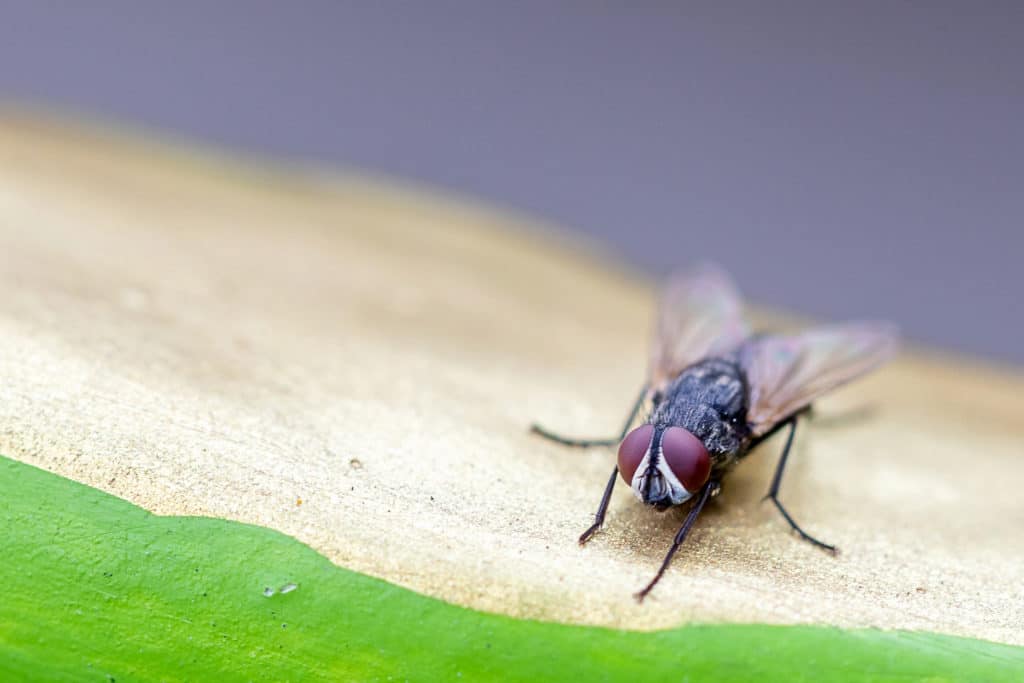

Common house fly: (Musca domestica)
Identification: 6mm in length and wingspan of 10mm, greyish abdomen which is slightly hairy. Large red eyes with an acute sense of smell. Larvae are white and opaque and pointed.
Habitat: Refuse and compactor areas typically where rotting vegetable matter is situated.
Breeding: Up to 150 eggs in batches each 1mm long. This is usually in foodstuffs, rotting materials and animal feces. Larvae have three moults and usually develop in 1-2 weeks before pupation in soil and then a following 1-2 to develop into an adult. Adults can live for around 25-50 days.
Control: Good hygiene is key and deep cleaning of refuse areas including – bin lids and making sure all food spoilage is cleaned.
Residual insecticide treatment to affected areas after cleaning.
Drainage systems should be cleaned including gullies.
EFK units and also windows/doors should be kept shut or fly screens be installed.
Lesser House Fly (Fannia canicularis)
Identification: Slightly smaller to the Common House Fly with only three less distinct stripes on the grey thorax and yellow patches on the abdomen. Apart from this the biological details are that of the same as the Common House Fly.
Habitat: Refuse areas, factories and poultry houses seasonally are desired if located in rural areas.
Breeding: As of the Common House Fly and Poultry sites are usually breeding location but can still be found in roadside puddles and dykes.
Control: Good hygiene and deep cleaning of refuse areas – same as the Common House Fly.
Residual insecticide treatment to affected areas after cleaning.
Drainage systems should be cleaned including gullies.
EFK units and also windows/doors should be kept shut or fly screens be installed.
